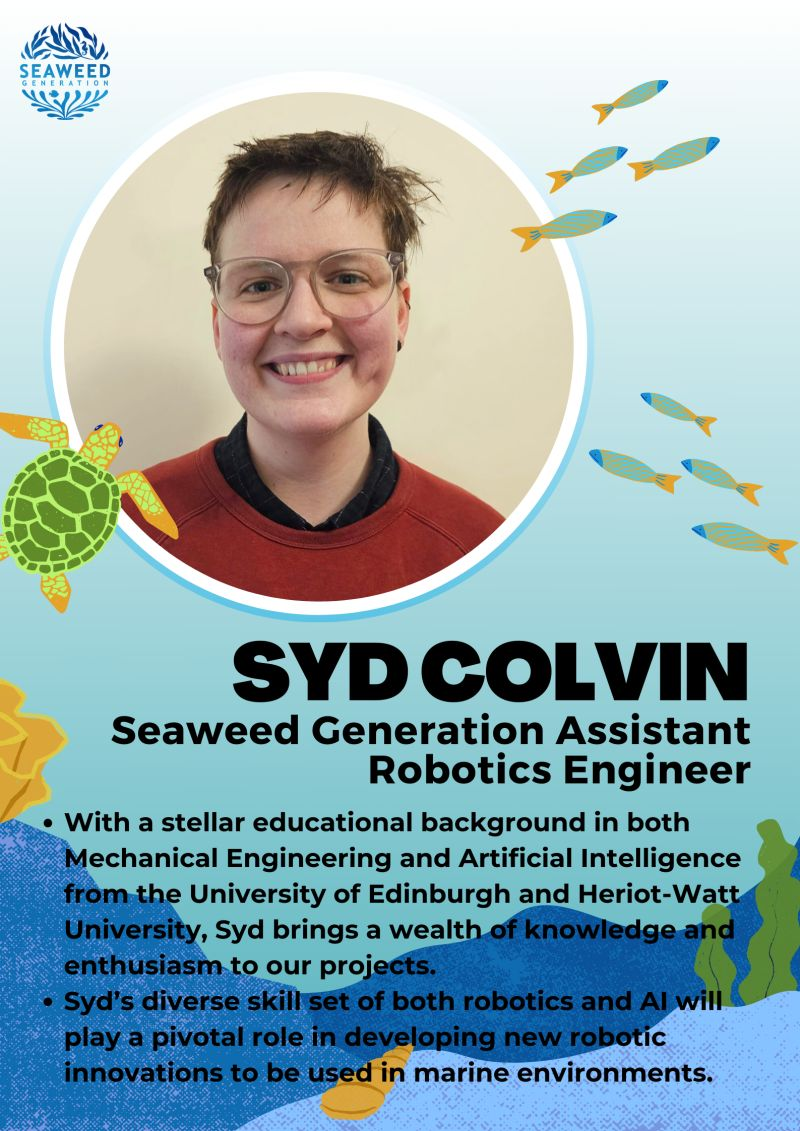Undercurrents: March 2024
Seaweed Generation's roundup of company news and perspective on all things climate.

Blythe Taylor, Chief of Staff
Seaweed has been hitting the headlines in recent weeks… but perhaps not in the way we macroalgae enthusiasts at SeaGen would most like!
Port Quin, an area of beautiful coastline in north Cornwall is at the centre of a heated debate around a proposed 100-hectare seaweed farm. Now, regular readers of Undercurrents will know our love for seaweed knows no bounds! However, in this case we understand why the development has faced such strong consternation that even local celebrity visitors, Martin Clunes and Andrew Lincoln have voiced their concerns.
There have been numerous objections raised about the consultation process (or lack thereof); the size of the farm; the number of buoys required; the impact the farm would have on tourism, surfing and wildlife.
Given the proposed site is 600m from the shore this is understandable. Locals have made it clear in many media interviews that it isn’t an outright objection to seaweed farming, but a desire to see sustainable farming solutions responsibly and thoughtfully located. We couldn’t agree more.
Right now seaweed cultivation in the UK lacks the innovation and infrastructure needed to unlock its true potential at scale. Farming seaweed is manually driven, weather dependent and time intensive. Some seaweed farmers talk of semi-automated processes and innovative approaches. When pushed though, these claims don’t always stack up. The use of machinery in harvesting techniques is becoming more common, but this isn’t automation. Currently, scaling up practices simply involve more humans using more machines.
If the seaweed industry is going to scale and mature, it will need true automation - processes or systems that operate automatically without human intervention. It’s at the heart of the SeaGen vision, and a huge stepchange from current cultivation practices that dominate the UK seaweed sector - not just in approach but location too.
This large scale automated vision of seaweed farming just wouldn’t work in near-shore environments. As we’ve seen with Port Quin, shoreline development is likely to be (and arguably rightly) hotly contested. The potential to scale up seaweed farming is limited, due in part, to the risk of infringing on other users of the marine environment. However, co-locating within offshore developments, such as offshore wind farms, would help mitigate this, and provide access to large scale dedicated growing areas which we currently lack in the UK. It’s the first step, and one already being taken by the Amazon sponsored North Sea Farm 1 Project (NSF1) consortium.
We’re not afraid to think beyond this. Our oceans cover around 70% of the Earth’s surface, yet the vast majority of marine use occurs within 12 nautical miles of the coast. Seaweed has the scope to become central to a new ocean bioeconomy, operating in spaces where humans cannot be because of safety and accessibility. When developed responsibly, seaweed farming can and should increase biodiversity, ease pressure on land for crops, provide a base material in fuel, food, feed, and bioplastics, all while absorbing CO2 as it grows.
Seaweed farming desperately needs scale and automation, and the reliability that comes with it. But as the Port Quin community have highlighted, this all needs to be achieved where it’s safe and sustainable to do so, allowing us to unlock the true potential of these amazing organisms.
Progress and Press
New SeaGen team members Bob Turner and Syd Colvin
We welcomed two new robotics engineers Bob and Syd to our growing team and are excited to be working together on the next SeaGen chapter!


Latest SeaGen Podcast - ‘We conservationists feel like we need to save nature…’

With Co-founders Paddy Estridge and Mike Allen and special guest Arica Hill, Executive Director of the Environmental Awareness Group, Antigua